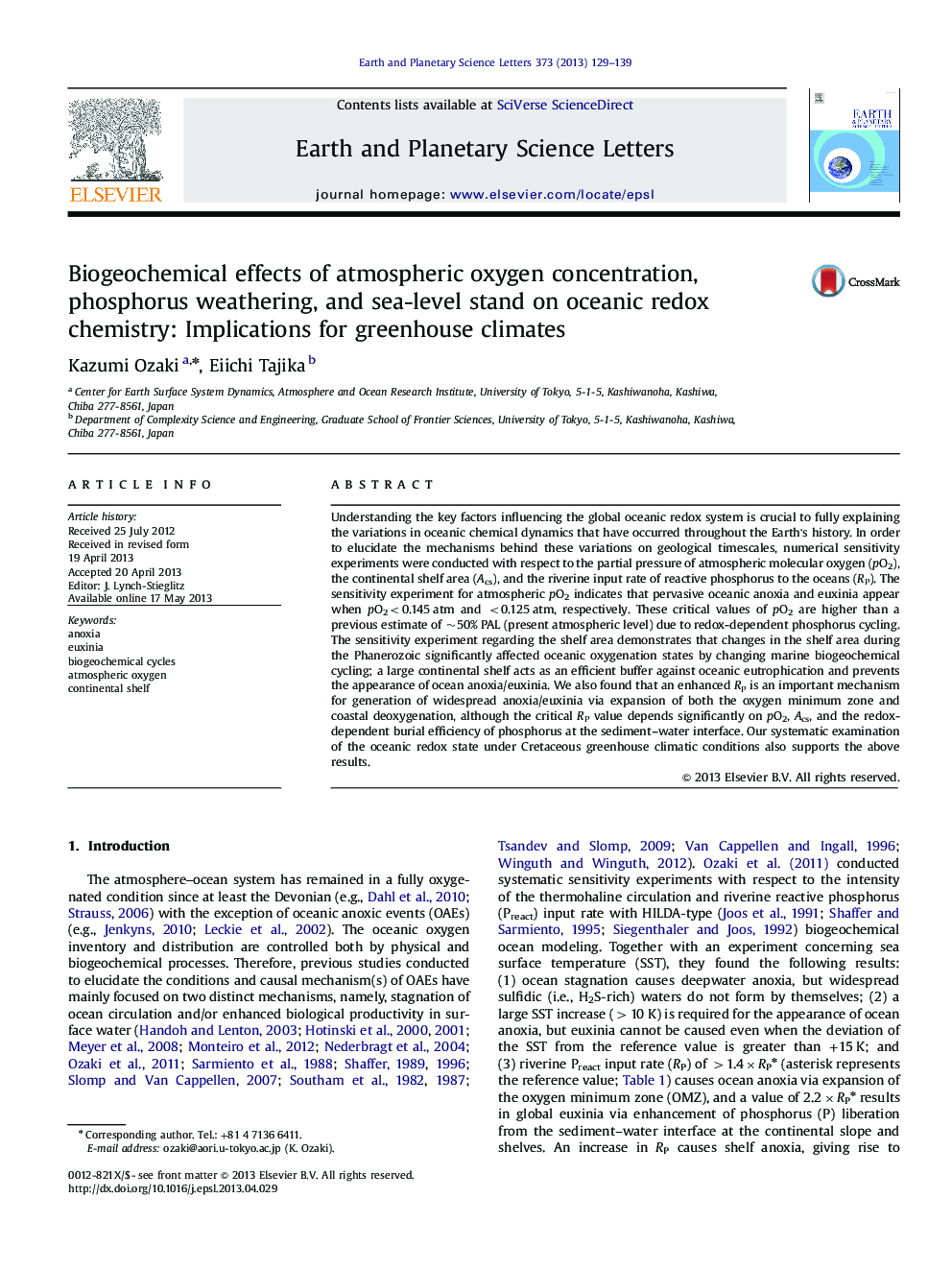| Article ID | Journal | Published Year | Pages | File Type |
|---|---|---|---|---|
| 4677072 | Earth and Planetary Science Letters | 2013 | 11 Pages |
•Factors regulating long-term oceanic redox conditions are investigated.•An oceanic biogeochemical cycle model of C, N, P, O, and S is presented.•Vast shelf area acts as a buffer against ocean eutrophication and euxinia.•Variation of shelf area is a key factor for long-term oceanic redox.
Understanding the key factors influencing the global oceanic redox system is crucial to fully explaining the variations in oceanic chemical dynamics that have occurred throughout the Earth's history. In order to elucidate the mechanisms behind these variations on geological timescales, numerical sensitivity experiments were conducted with respect to the partial pressure of atmospheric molecular oxygen (pO2), the continental shelf area (Acs), and the riverine input rate of reactive phosphorus to the oceans (RP). The sensitivity experiment for atmospheric pO2 indicates that pervasive oceanic anoxia and euxinia appear when pO2<0.145 atm and <0.125 atm, respectively. These critical values of pO2 are higher than a previous estimate of ~50% PAL (present atmospheric level) due to redox-dependent phosphorus cycling. The sensitivity experiment regarding the shelf area demonstrates that changes in the shelf area during the Phanerozoic significantly affected oceanic oxygenation states by changing marine biogeochemical cycling; a large continental shelf acts as an efficient buffer against oceanic eutrophication and prevents the appearance of ocean anoxia/euxinia. We also found that an enhanced RP is an important mechanism for generation of widespread anoxia/euxinia via expansion of both the oxygen minimum zone and coastal deoxygenation, although the critical RP value depends significantly on pO2, Acs, and the redox-dependent burial efficiency of phosphorus at the sediment--water interface. Our systematic examination of the oceanic redox state under Cretaceous greenhouse climatic conditions also supports the above results.
